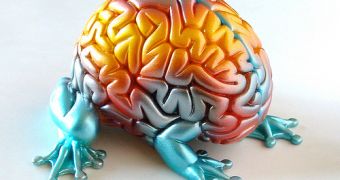The immune cells that live inside the brain, called microglia, have a unique origin and are formed short after conception, found a team of researchers from Mount Sinai Medical Center.
Previously, scientists thought that microglia appeared at the same time as macrophages – other immune cells that develop at birth, but this new discovery might actually open the way to new treatments of degenerative neurological diseases like Alzheimer's and autoimmune illnesses such as multiple sclerosis.
In the first part of the study, the scientists transplanted blood cells precursors (precursors for all macrophages) from one newborn mouse to another.
Because the transplanted cells could not be identified in the recipient animal, the researchers concluded that microglia originated before birth, during embryonic life.
For the second part of the research, the team used a mouse model that had fluorescent biosensors in blood precursors, so that they could see at what time during embryonic life, precursors developed into microglia.
The fluorescence is permanent once activated so all the cells that develop from the fluorescent precursors should stay fluorescent.
Seven days after conception, the researchers activated the fluorescence and when they looked at adult mice they found fluorescent microglia but no fluorescent macrophages.
This finding establishes that microglia are unique in that they originate from precursors that appear around seven days after conception.
Previous research has shown that microglia plays a very important role in the development of many brain diseases so “this really is a startling discovery," stated Miriam Merad, MD, PhD, Associate Professor of Gene and Cell Medicine at Mount Sinai School of Medicine and Principal Investigator of the study.
“We've shown that the precursor cells develop into microglia only during a short period after conception.
“Now that we know that microglia originate in early embryos, theoretically we should be able to generate microglia from embryonic stem cells to treat brain diseases caused by defective microglia.
“This is a very good example of why scientists need to be able to conduct research with embryonic stem cells."
The study is published online in Science Express.

 14 DAY TRIAL //
14 DAY TRIAL //